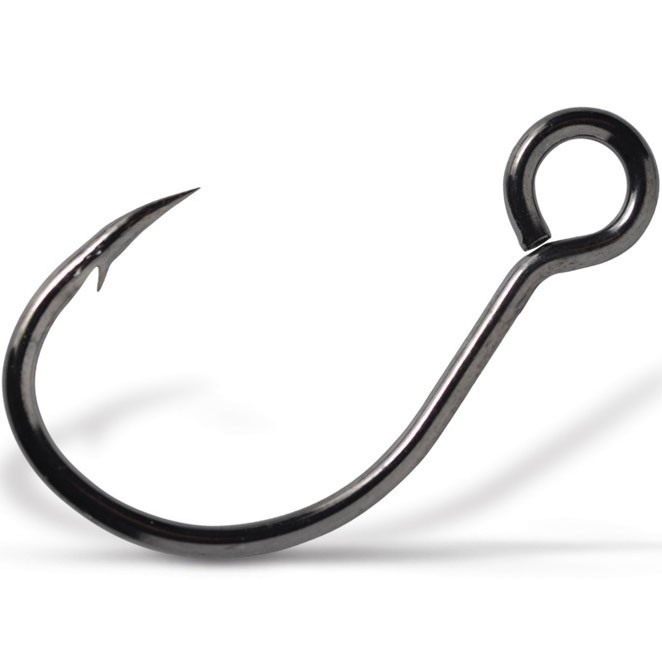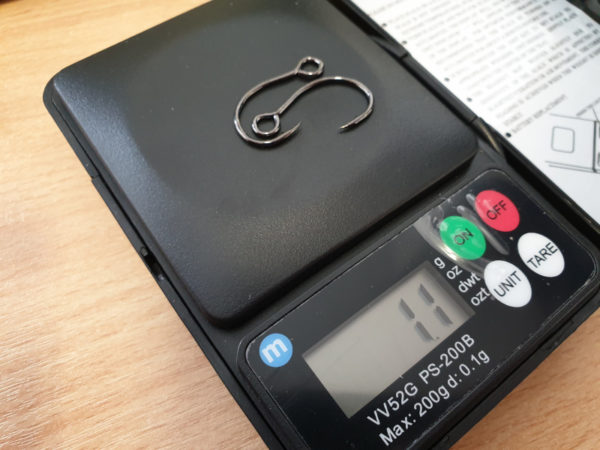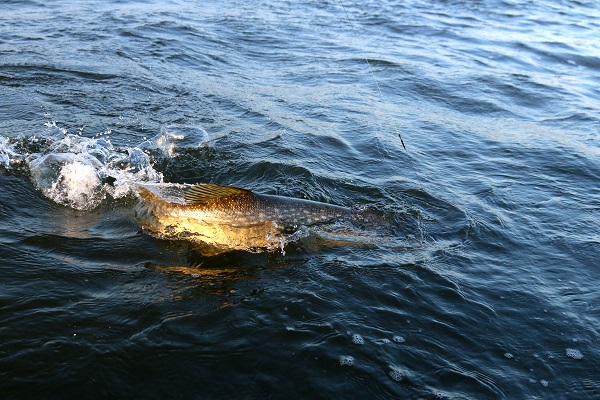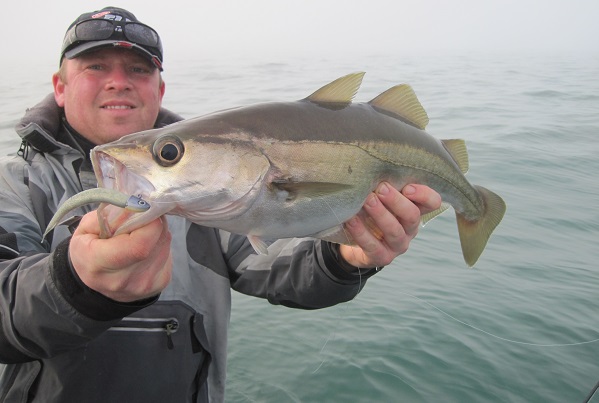As anglers look for a more conservative approach to eliminate and reduce fish handling and damage whilst lure fishing for various salmonid species. Replacing treble hooks with inline single hooks is a growing trend that we are seeing across the lure fishing fraternity.
In this article, we will look at the advantages inline single hooks have over treble hooks; how to fish inline single hooks effectively and how to choose the correct size of inline to replace those trebles.
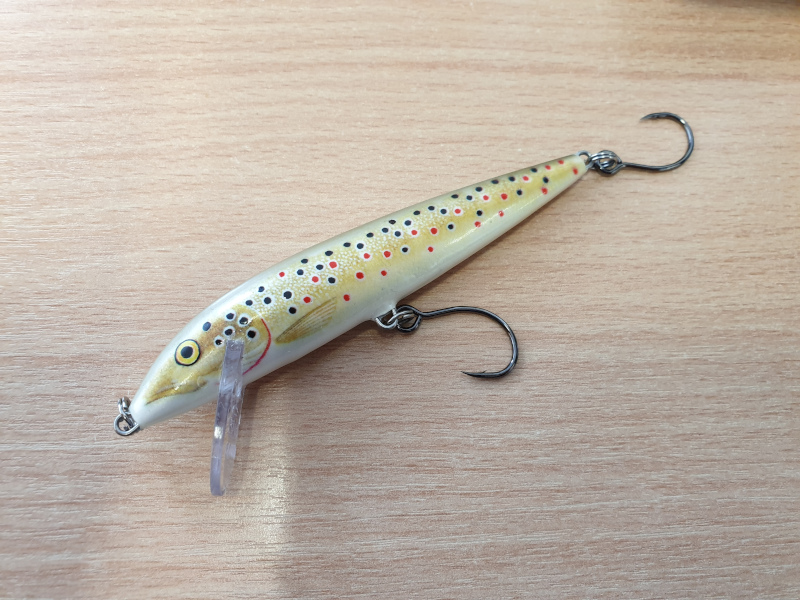
What kind of single hooks should I be using?
If you’re looking to replace the treble hooks on your hard lures such as crankbaits, spoons etc. Then you will require an inline single hook like the one shown in the image below.
Inline single hooks are specifically designed to replace treble hooks on lures. They come with an oversized eyelet for increased articulation and movement. This eyelet is designed to accommodate split rings and eliminates the tight tolerances between the split ring and hook which may result in poor hook presentation as well as lure imbalancement.
As you can see from the picture above, inline hooks have an increased gape (the gap between the hook point and hook shank) designed for increasing hook-up ratio and hook holds. There is also another reason why there is such a wide gape, however, we will touch on this later in the article.
So what are the advantages of using inline single hooks?
Apart from being sticky, sharp and very strong. Single hooks have a few advantages over treble hooks, let’s have a look at some of these below:
Strong hook ups
When hooking into a fish with a single hook configuration, all the pressure from the strike is exerted into one hook point. Providing better penetration and a more solid hook hold. This is ideal when targeting softer mouthed species such as trout, salmon etc.
Lure Longevity
Unlike treble hooks, the inline single hook point is facing out away from the lure. So when the lure is working, the hook points do not interfere with the flank of the lure. Treble hook points on the other hand, can become dulled as the treble hook can move erratically with a lure. This will see the hook point make contact with the flank of the lure quite often when being worked. This can also result in the body of the lure becoming worn over time too.
Less Noise
This goes hand in hand with our previous point. Treble hooks tend to come into contact with the flanks of a lure. This can increase the amount of noise that a lure can produce when worked. This could be disadvantageous if you’re fishing for wary fish or even fishing in calm conditions where a more subtle fishing approach is required.
Reduced Snagging
We all run the risk of snagging the bottom whilst fishing with lures. However, using inline single hooks will reduce that significantly. With the hook point of the tail hook facing upwards, it only leaves one hook point exposed to snagging, the belly hook.
With various testing of inline single hooks, we found them very advantageous whilst fishing for salmon during the late Autumnal runs when leaves were a plenty in the river. From past experience, fishing treble hooks in these conditions became very frustrating as the treble seems to catch every leaf that floats down the river. However, inline singles seem to reduce the amount of leaf snagging drastically.
Also, fishing for saltwater species such as bass or wrasse, we found the singles did outperform trebles through dense kelp or rough ground features and if a lure does become snagged, we found that you have more chance of recovering a snagged lure. Working one hook point out of a snag is far easier than trying to work 2 or even 3 hook points out of a snag.
Hook Size Guide
| Rapala Size Reference | Treble Hook Size | Single Hook Size |
| Original Floater F3 | 12 | 4 |
| Original Floater F5 | 10 | 4 or 2 |
| Original Floater F7 | 7 | 2 |
| Original Floater F9 | 7 | 2 or 1 |
| Original Floater F11 | 6 | 1/0 |
| Original Floater F13 | 5 | 2/0 |
| Original Floater F18 | 4 | 3/0 |
Striking With Single Hooks
Probably the biggest concern most anglers have when considering the switch to single hooks is the hook up ratio. When using treble hooks, you have the added advantage of 6 hook points. So you automatically think the law of averages is greatly in your favour as one of those 6 hook points are surely going to stick!
However, when fishing inline single hooks, we never found that our hook up ratio greatly dropped. If anything we did find that our striking had to be slightly altered.
In most cases, when using treble hooks you can strike to the side or even directly upwards when setting the hooks and your hook up ratio is never really affected. However, due to the added articulation and movement when implementing inline single hooks – thanks to the oversized hook eye and the lure’s split ring.
We found that striking to the side will see the inline hook have to turn to a degree before it makes enough contact to set a positive hook hold.
The majority of the time the inline hook itself will then be sitting horizontally across the mouth of the fish – which is not ideal. A few aggressive headshakes can see the hook work its way out pretty easily.
To overcome this, strike vertically! In doing so will ensure the hook tries to rotate to a vertical position. This will ensure a more positive hook up and hook hold. Ensure you keep tension on your line at all times and keep the rod high. This will keep a better angle on the inline single and keep the fish pinned better.
We found dropping the rod to the side whilst playing a fish can alter the angle of the seated hook and may reduce the depth of hook hold.
Weight distribution
One thing to consider when changing out your treble hooks to singles especially on hard lures. Is the action and weighting of the lure. This may be affected when changing the hooks if the hook and split ring weights have not been taken into consideration.
A lot of floating and suspending lures are critically balanced and this is all considered during the construction of the lure, the wire gauge of the hooks to the split rings used.
For optimum lure action results, weigh each hook and ensure the replacement hook is as close as possible to the original hook weighting. If they’re not, experimenting with alternative split rings and hooks until you can near enough match the weighting to the original hook arrangement.
We found that if the hook weighting as well as the hook placement was altered, not only would it affect the balancing of the lure but it would affect the lure’s action. Our testing, found that some crankbait models with a reduction in weight due to hook replacement would kill the action slightly and some models would be the polar opposite, the action was heightened and more aggressive in presentation.
If we look at an example: The Megabass Vision 110 is an extremely well-balanced lure. So changing hooks or split rings will inevitably disrupt the behaviour of the lure in the water. Like we touched on earlier, if we removed the hardware of a suspending vision 110 and uprated the hooks and split rings, the chances are the suspending model would then start to sink.
TOP TIP: If you’re not confident with a 2 hook arrangement on a 3 hooked lure. You can opt to replace all three treble hooks with three inline singles. Ensure the inline hooks are small enough that they will never meet or cross with one another.
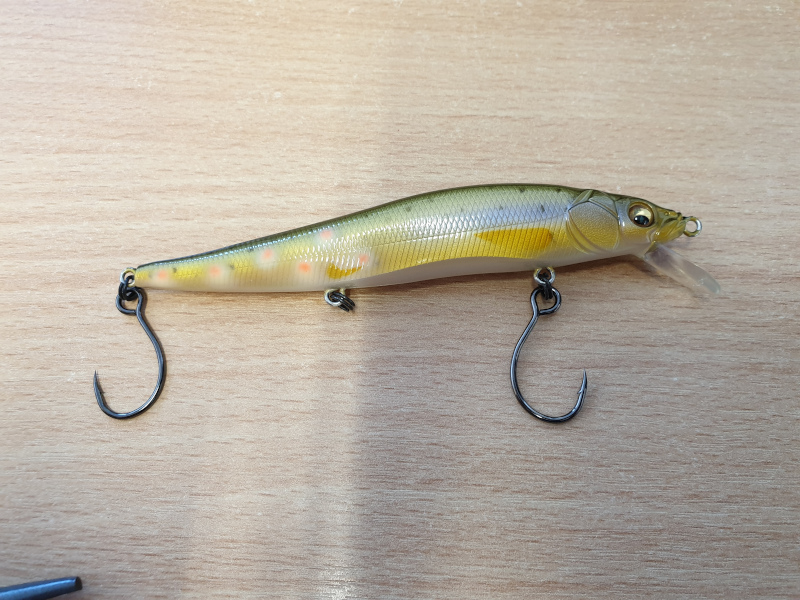
Step by Step To Replacing Your Treble Hooks With Single Hooks
Changing the hooks over is an easy and straightforward procedure. There are a couple of elements to take into consideration and we will be covering these below.
Finding the right hook placement is simple. You want to ensure you check a couple of things before replacing.
A general rule of thumb is to measure the distance from the hook point to hook point on the original treble hook. Then use the distance as a measure to compare the distance from the hook point of the inline single to the shank of the single. (See diagram)

Secondary, lay the inline single flat against the body of the lure. We want the hook point to be exposed and not masked by the body profile of the lure. (See below diagram) If the hook point is not exposed enough, opt for a larger inline single hook on the belly hook hanger.
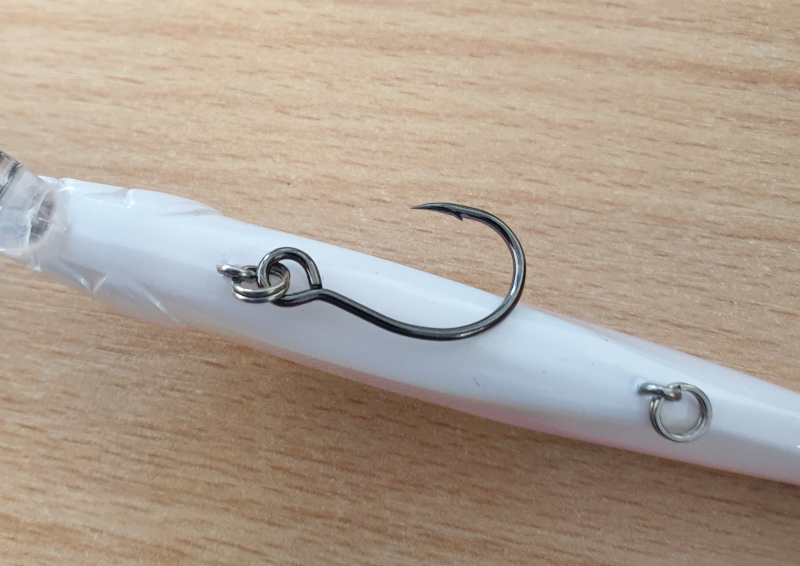
Thirdly, we want to ensure the hooks are correctly fitted. The tail hook, should see the inline hook point facing upwards whilst the belly hook, the hook point should be facing away from the bait (as seen in the pictures above)
Summary
We hope this article has given you an insight to the world of inline single hooks. After our trial run, we saw some great advantages using them for specific species and some tough fishing conditions.
A more fish friendly and snag free presentation were the main benefits that we found whilst using them. They definitely have their place in the tackle box. Why not see for yourself!


